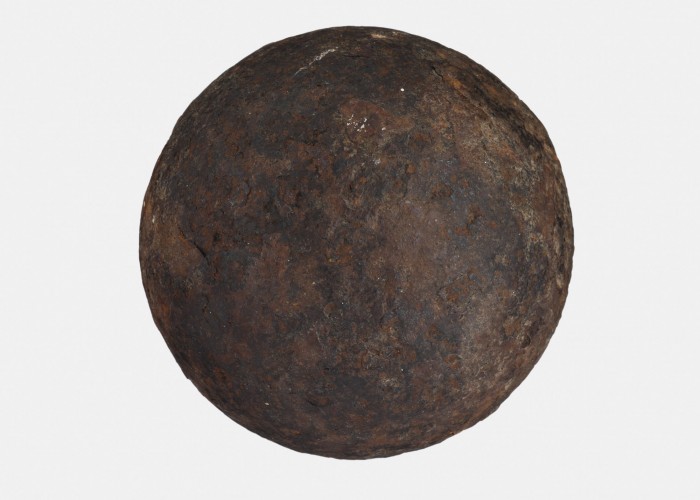Cannon Ball Fired at Waterloo
This is a cannon ball (round shot) dug from the battlefield of Waterloo – one of an estimated 42,000 fired by both sides during the long battle on 18 June 1815. This solid ball of iron, weighing six pounds (~2.7 kg) was a fearsome weapon, able to smash apart the bodies of men and horses.
Round shot made up at least three quarters of the projectiles fired from cannons at Waterloo. These balls were most effective when fired at packed formations of men, such as a French column or British square. Punching through a mass of soldiers, a round shot could kill or main dozens. They could also travel hundreds of metres by skipping across the ground, or rolling along breaking legs and ankles. However, the ground was very wet during most of the Battle of Waterloo, meaning the cannons were much less deadly than usual.
16-year-old British officer Ensign Keppel witnessed a cannon ball hitting a fellow soldier:
“… a round shot took off his head and spattered the whole battalion with his brain, the colours and the ensigns in charge of them coming in for an extra share. … A second shot carried off six of the men’s bayonets, a third broke the breastbone of a Lance-Sergeant.”
It is impossible to tell if this is a French or British shot, as both armies used six pounder cannons that took the same size of ammunition. The round shot would be loaded into a cannon on top of a sealed bag full of gunpowder, travelling up to 1000 metres with reasonable accuracy. Cannons could also carry different, more specialised kinds of ammunition, such as exploding shells and grapeshot for use at close range.
-
Curatorial info
- Originating Museum: National Army Museum
- Accession Number: NAM. 1999-05-8
- Production Date: c. 1815
- Material: Iron
- Size: 90 mm diameter
-
Use this image
You can download and use the high resolution image for use in a non-profit environment such as a school or college, but please take note of the license type and rights holder information below
- Rights Holder: Copyright National Army Museum
- License Type: All Rights Reserved
Find it here
This object is in the collection of National Army Museum








